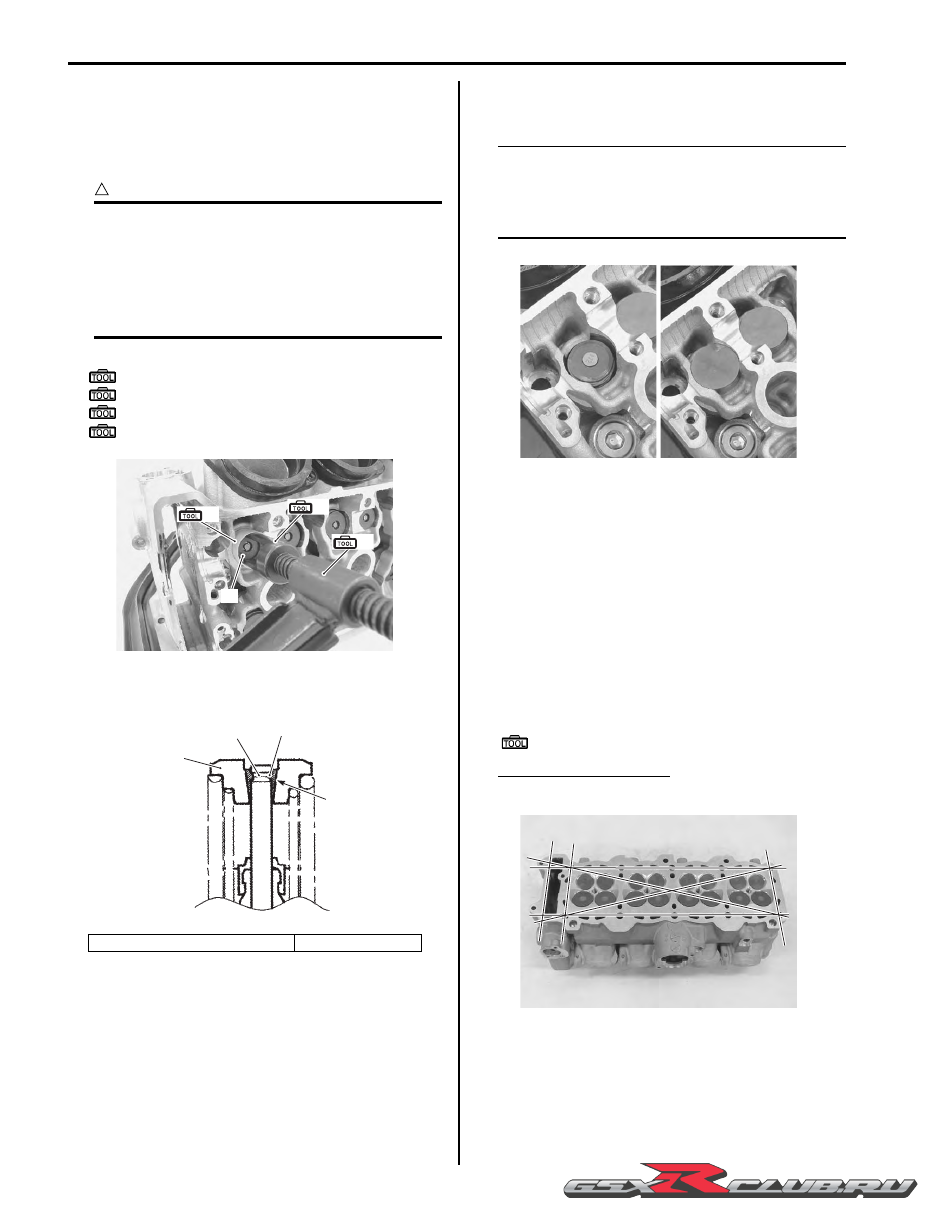Suzuki GSX-R1000. Service Manual - part 18

1D-44 Engine Mechanical:
• Put on the valve spring retainer (10), and using the
special tools, press down the springs, fit the cotter
halves to the stem end, and release the lifter to allow
the cotter halves to wedge in between retainer and
stem.
CAUTION
!
• Be sure to restore each spring and valve to
their original positions.
• Be careful not to damage the valve and
valve stem when handling them.
• Be careful not to damage the tappet sliding
surface with the special tool.
Special tool
(A): 09916–14510 (Valve lifter)
(B): 09916–14522 (Valve lifter attachment)
(C): 09919–28620 (Sleeve protector)
: 09916–84511 (Tweezer)
• Be sure that the rounded lip “G” of the cotter fits
snugly into the groove “H” in the stem end.
• Install the other valves and springs in the same
manner as described previously.
• Install the tappet shims and the tappets to their
original positions.
NOTE
• Apply engine oil to the stem end, shim and
tappet before fitting them.
• When seating the tappet shim, be sure the
figure printed surface faces the tappet.
Cylinder Head Related Parts Inspection
B947H11406028
Refer to “Cylinder Head Disassembly and Assembly”
(Page 1D-40).
Cylinder Head Distortion
1) Decarbonize the combustion chambers.
2) Check the gasket surface of the cylinder head for
distortion. Use a straightedge and thickness gauge.
Take clearance readings at several places. If
readings exceed the service limit, replace the
cylinder head.
Special tool
: 09900–20803 (Thickness gauge)
Cylinder head distortion
Service limit: 0.02 mm (0.0008 in)
10. Valve spring retainer
11. Cotter
(A)
(B)
(C)
10
I947H1140089-01
“H”
10
11
“G”
I947H1140090-02
I947H1140091-01
I947H1140092-02